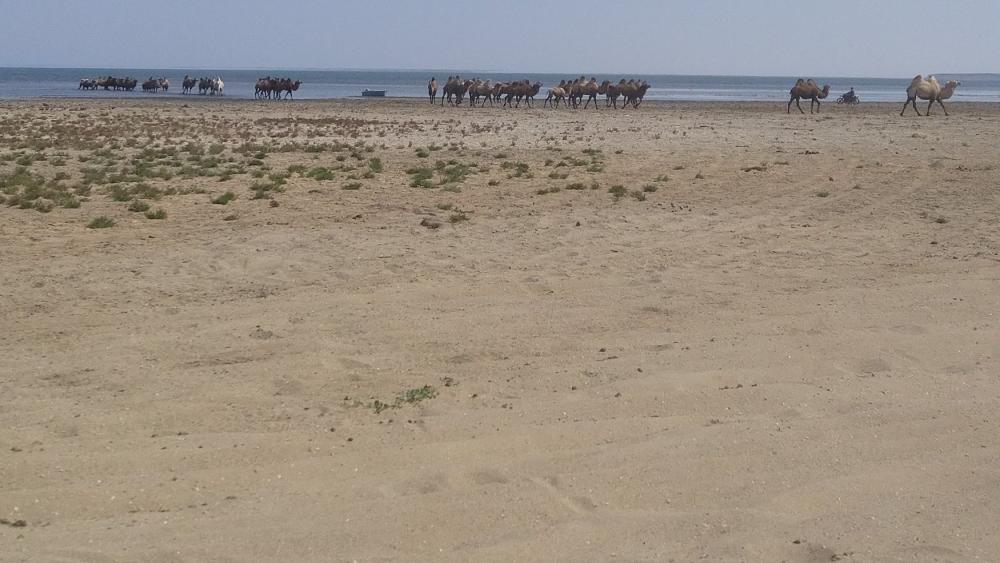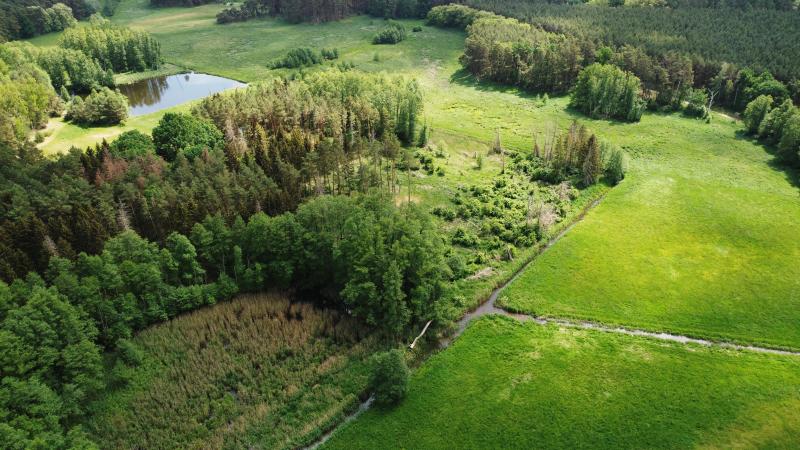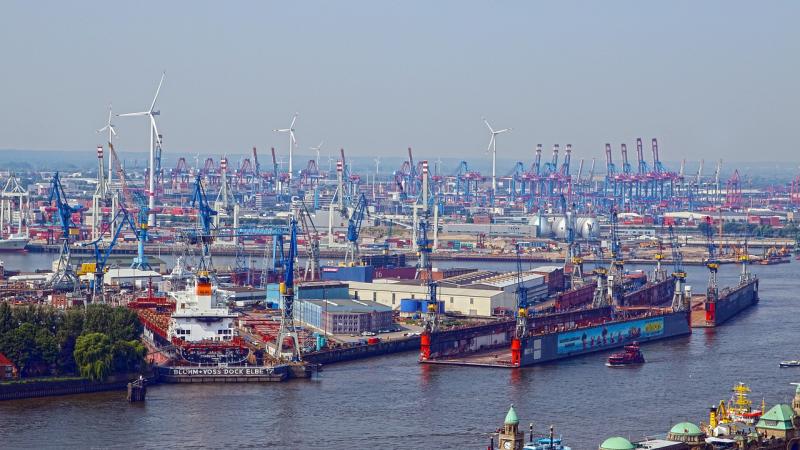
The Aral Sea: half lake, half desert. The North Aral Sea has returned to its pre-dry state. | Photo: Georgiy Kirilin
Until the mid-20th century, the Aral Sea was the fourth largest lake in the world. Due to the active use of the two main tributaries, Amu Darya and Syr Darya during the Soviet era, it began to shrink in the 1960s. Today, 90 per cent of the lake has dried up, creating the Aralkum Desert. As a countermeasure to prevent further desiccation, the 12 km long Kokaral Dam was constructed in 2005, separating the northern part of the Aral Sea from the rest of the former lake basin, and was widely recognized as an exceptional success in large-scale water management and restoration. "Our study documents the process of restoring the northern Aral Sea on a physical level. The increase in water volume and the reduction in salinity have had a positive effect on the distribution of oxygen and nutrients in the lake. The direct positive effects on the biodiversity of microorganisms and fish communities have already been clearly demonstrated in other studies", said IGB researcher Dr Georgiy Kirillin, who led the study.
Salinity drops significantly and the lake mixes again
As a result of the dam construction, the lake volume of the northern Aral Sea has stabilized at around 27.5 cubic kilometres. Its area has increased from 2,800 square kilometres in 2006 to 3,400 square kilometres in 2020. Salinity dropped from 18 grams per kilogram in 2002 to 10 grams per kilogram in 2014 – roughly the natural salinity of the Aral Sea before desiccation. As a result, temperature, seasonal stratification, ice cover and oxygen content changed, which effects have not yet been comprehensively assessed scientifically.
The research team led by Georgiy Kirillin analyzed the lake's mixing dynamics, temperature regime, and the transport of nutrients and oxygen in the water column using data from expeditions between 2016 and 2019 and a year-long continuous monitoring of the temperature and oxygen balance by an autonomous measuring station. The seasonal mixing regime is a fundamental characteristic of lakes that controls the distribution of nutrients, oxygen and organisms throughout the water column and determines the ecological balance and overall health of a lake.
Exchange of oxygen and nutrients restored
The study shows only a weak vertical thermal stratification in the northern Aral Sea in summer, accounting for about seven per cent of the lake's volume. Such summer stratification can reduce the exchange of oxygen and nutrients in the water column. However, due to strong internal waves, the lake is well mixed, so that most of the water column remains well oxygenated year-round and nutrient exchange between the water column and the sediment continues, which is important for the lake’s food webs.
The consequences of insufficient mixing in the southern part of the Aral Sea
The consequences of impaired seasonal mixing for the health of the lake and biodiversity are obvious in the case of the southern Aral Sea, which has not been restored. Due to the high salinity, seasonal mixing is completely absent in large areas; the lake instead exhibits permanent deep-water stratification. Consequently, these areas are completely anoxic, have extremely low biodiversity, and show very high rates of methane and hydrogen sulphide production in the deep water.
Fragile state: water extraction and climate change may undermine the success
Although the northern Aral Sea has generally regained a well-mixed state similar to that before desiccation, model scenarios indicate that mixing behavior can become unstable: even minor changes in water level or transparency (e.g., from increased nutrient input from the catchment) can prolong the stratification period in the Aral Sea. "Increased water consumption in the catchment area on the background of global climate change poses the risk of an abrupt deterioration of lake conditions “, said Georgiy Kirillin.
A good example for the restoration of other drying lakes
Like the Aral Sea, many lakes around the world are losing water due to human extraction and climate change. There are plans to restore some of these lakes in a way similar to the norther Aral Sea; a notable example is the proposal to divert water from the Congo River basin to Lake Chad. Lake Chad has shrunk by up to 90 per cent since the 1960s due to excessive water use for irrigation and the effects of climate change. Another example is the Dead Sea conservation project, which involves building a canal from the Red Sea to stabilise its water level.
However, such 'megaprojects' can have diverse and largely unpredictable consequences for lake ecosystems and regional water balances. In this respect, the Aral Sea restoration project provides valuable insights for future projects, as it is an example of a successful large-scale experiment with diverse consequences for the lake and its surroundings.
The general principle of lake stratification:
In temperate climatic zones, lakes are subject to strong seasonal cycles that are fundamentally controlled by the physical properties of the water: In summer, surface water warmed by the sun stratifies above the permanently cold deep water. This is due to the large temperature-related differences in water density. At 4 °C, water has its greatest density and therefore sinks to the bottom. Warmer water remains on the surface. In autumn, when the temperature is constant throughout the lake due to surface cooling, the energy carried in by the wind is sufficient to completely mix the upper and lower water masses. This distributes oxygen and nutrients evenly throughout the entire body of water. This means that they are available again for the production and decomposition of biomass during the stratification phase the following summer.






